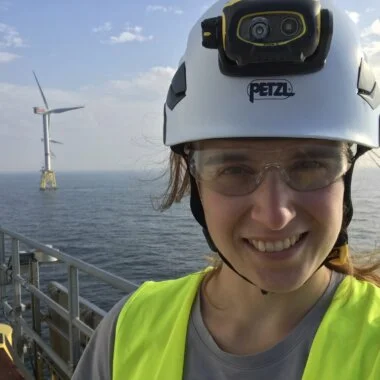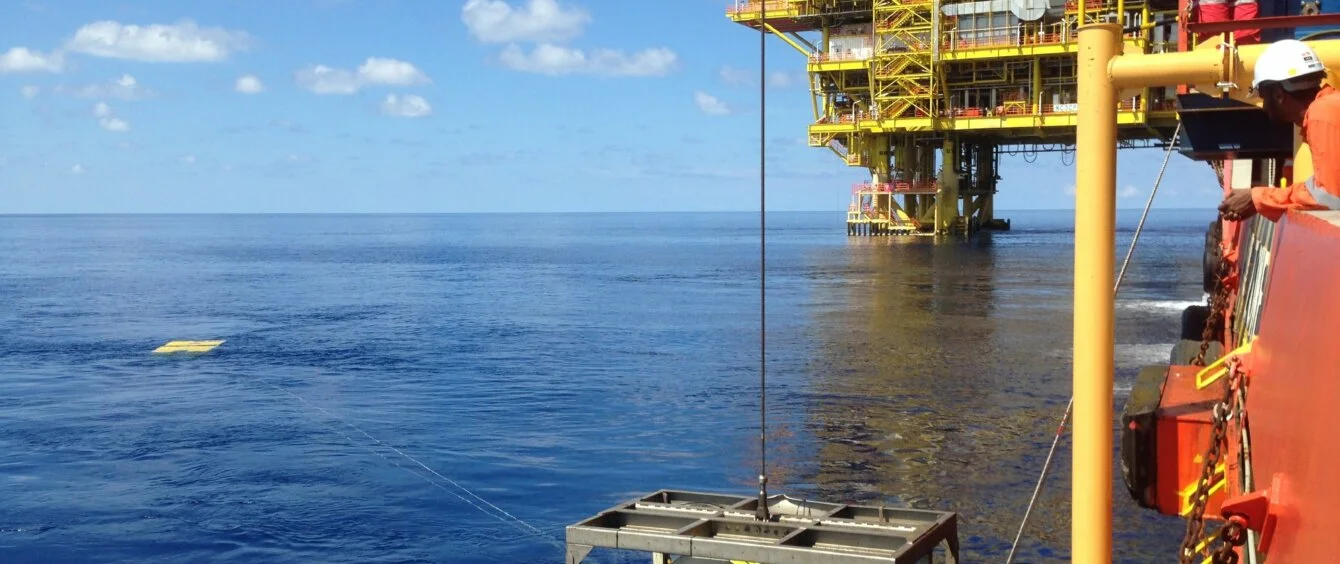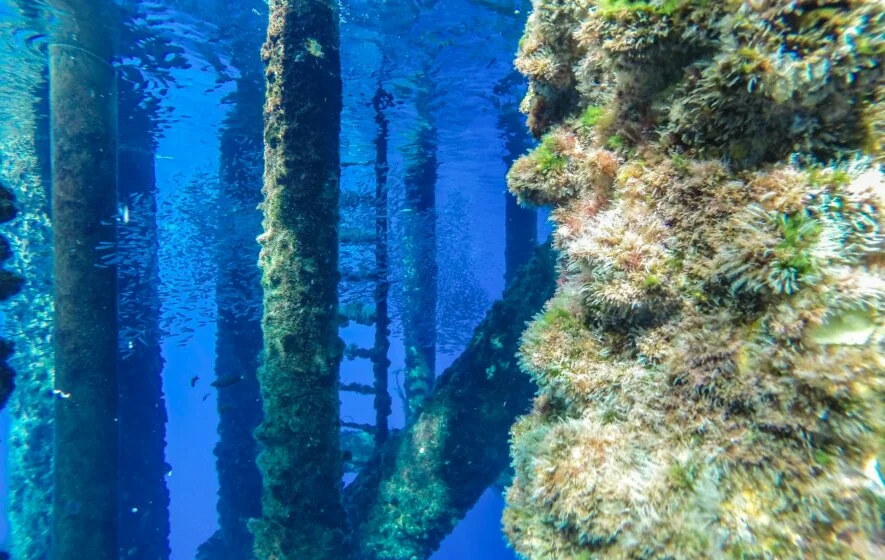
- M.S. in Energy Engineering focussing on Renewable Energy, RWTH Aachen
- In charge of offshore inspections at RWE Renewables
Regular inspections are indispensable to ensuring efficient and uninterrupted generation of green electricity by wind turbines for as long as possible. They involves verifying that all technical and infrastructure components are in good condition. This helps to schedule maintenance work ahead of time, thus avoiding expensive repairs and in the worst case turbine failure. Inspections are mandatory in some countries, including Germany.
However, component inspection is not at all easy especially in wind farms. After all, large parts are located beneath the water surface, if not buried in the seabed. For instance, 95 percent of the cabling is out of sight. Moreover, it is very difficult to access foundations, adapters for jetties, and sonar transponders that trigger submarine alarms and scour protection, which prevents the wind turbines‘ support structure from being flushed or hollowed out.
Consequently, wind farm operators initially hired professional divers to conduct underwater inspections. However, putting them to work in high seas is risky, complicated and expensive. Therefore, many companies, including RWE, choose this option only in rare exceptions. Instead, they prefer to make use of innovative techniques in order to minimise the effort and costs of subjecting these installations to careful inspections.
Diving robots provide live imagery from deep waters
Special diving robots fitted with sensors and tools are particularly efficient. They are easily capable of operating for long periods of time at great depths even in the most adverse of conditions. They can be conveniently controlled from a ship. For this purpose, remotely operated vehicles (ROVs) transmit live pictures of their deployment.
Such an ROV regularly gets sent on assignment in wind farms in the German North and Baltic Seas. During routine inspections required by the German Office of Maritime Transport and Hydrography, wind farm operator RWE uses one to check the condition of its installations.
In 2019, the Seaeye Tiger ROV was deployed in an operation of this type. It started by being submerged beneath the 385-megawatt Arkona wind farm 35 kilometres off the Isle of Rugen. A few days later, it inspected the underwater components of the 288-megawatt Amrumbank wind farm.
The 15-strong team of wind farm operator RWE as well as experts from Deutsche Windtechnik, O. S. Energy and Bluestream Offshore set off in Sassnitz on the Hydrograph research ship. The Seaeye Tiger was controlled via a fixed line by an operator aboard the ship. Such supply cables have a maximum length of 450 metres and are connected to an electric winch.
Technical tests also possible
The camera allows for cable inlet and outlet holes to be inspected as well. Such visual checks are always the first step in underwater inspections. This enables detection of surface scratches and tears within and outside of the foundation as well as of the position of the wiring looms.
In addition, the highly specialized ROVs are capable of carrying out a host of measurements by themselves. They can thus detect the thickness of marine growth on components. Technical tests, e.g. of sonar transponders, are also possible.
Being able to use an ROV allowed us to perform a very safe and fast underwater inspection which would otherwise be a risky operation. Frank Scholtka, former Arkona Plant Manager
Cluster concept reduces effort and costs
The progressive expansion of offshore wind energy drives up the need for underwater inspections. Service provider Deutsche Windtechnik (DWT) thus increasingly banks on this type of cluster concept. After all, servicing several wind farms on a single tour lowers both operator effort and costs. Moreover, ship fuel savings are beneficial to the environment.
RWE operates several wind farms in the North and Baltic Seas, with more to follow. This is why the cluster concept is especially well suited to maintenance and will be expanded further. “Theoretically, we could include all wind farms built in the North and Baltic Sea from now on in the cluster concept,“ says Mona Morgenstern, Offshore Wind Operations Engineer at RWE Renewables.
This provides upside to both partners: “Now DWT is completely flexible in implementation and has a large, long-term scope, which gives it planning certainty. We attain favourable contractual conditions and can plan campaigns innovatively while creating synergies. What’s more, this enables us to forge a good, long-term partnership, which is extremely valuable especially in these turbulent times,“ adds Morgenstern.
Now RWE uses the Cougar XT Compact ROV, which is particularly well suited to operations in strong currents. The crew went on a tour aboard the Fortuna Kingfisher for the latest inspections. In 2023, course will be set for the Kaskasi wind farm for the first time.
To keep the ship stable while inspecting wind turbines, Deutsche Windtechnik has opted for what is known as vessel rope positioning system. This involves the ship casting a rope, circling the wind turbine, taking up the slack and pulling it tight to form a noose. This reduces the risk of cable damage because there is no need for an anchor to be thrown into the seabed and this is a safe way to keep the ship stationary.
Toolkit for various operations
Offshore wind farms are not the only application for the technology. ROVs are also used to inspect oil and gas rigs and to check underwater infrastructure such as powerlines and telecommunications cables. Like other ROVs, the Seaeye Tiger can thus be configured for all sorts of operations, thanks to a swappable toolkit.
But what happens if an inspection reveals a weak point? In such an event, there is usually no way around specially trained divers above all when cables are affected. Moreover, so far, certain miniscule or sensitive components and connections can only be checked by experts.
First unmanned boat tests underway
The technology continues to evolve constantly. For instance, autonomous robots are being engineered. Unmanned submarines deploy them to their operation sites where they perform inspections entirely on their own. Norway-based Reach Subsea is trialling such a remote system, which it expects will deliver substantial advantages. Examples include ship fuel cost savings and further carbon dioxide reductions.

